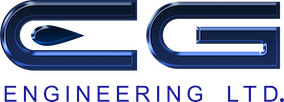Starting Up a Racked Drilling Rig — Get Legal & Field Ready
When a drilling rig is racked for an extended period without working or running the engines, getting it back to field ready condition can be a very expensive exercise.
Here we explain what’s needed to get a drilling rig field ready and legal to go to work.
Like all mechanical tools, rigs deteriorate when unused. A rig made legal and field ready may still have issues caused by long term storage and disuse.
Rig Legal Requirements — Inspections & Certifications
Drilling contractors in Canada follow recommended inspection and certification intervals for key pieces of rig equipment, as defined by Recommended Practices developed by Canadian Association of Oilwell Drilling Contractors (CAODC).
Key inspections and certifications
If a rig has been racked in a yard for an extended period it’s almost certain that key inspection and certification interval periods will have lapsed, as the certifications are expensive to maintain.
There are multiple required inspections and certifications, and the key ones are as follows:
Inspection and Certification of Masts
Inspection and Certification of Overhead Equipment
Inspection and Certification of Blowout Preventers
Keeping certifications and inspections up-to-date
It’s up to the rig contractor to ensure that all certifications are up-to-date.
The tour book for the rig should be made available to understand the status and frequency of the rig inspections — and if any inspections are out-of-date.
Inspection frequency is based on operating time, but certifications will expire whether the rig is operating or not.
Rig Field Readiness — Mechanical Inspection, Servicing & Inventory
Drilling rigs are mechanical tools and the more they work the better they work. When a rig sits for an extended period a full mechanical inspection should be completed prior for reliability of the equipment.
Major component servicing and reliability testing
Every engine on the rig should be completely serviced and should be ran to ensure reliability.
All hydraulic hoses should be replaced, and the system should be flushed.
As well, all the drilling line that the rig was stored with should be slipped and cut and new line installed as the condition of the old line is unknown.
Parts inventory and procurement
If the rig is part of a larger fleet of similarly built rigs an inventory of parts needs to be taken to ensure that parts were not scavenged for other rigs in the fleet. This should be done before the rig ever leaves the yard as specific parts could be very difficult to procure.
Time needed to reach field readiness
It takes about two weeks worth of work to get a long-racked rig completely field ready.
It’s advantageous to complete most of the work before the rig moves — also ensuring that work is completed at the rig contractor’s cost.
Rig Safety — Crew, Boiler & Load Operator Tickets
When firing up a rig that has been racked for an extended period, the drilling contractor will often pull crew members from other rigs in its fleet to form a brand new crew — one that has not worked together before.
It is crucial to verify that all the members of the new crew have up-to-date and relevant tickets.
If a boiler is used, crew members need to have relevant boiler tickets. If a loader is used, crew will need loader operator tickets. These tickets need to be made available for review.
Logistical Issues — Rental Equipment & Rig Layout
Some rig contractors choose to rent major equipment including blowout preventers, boilers, and drill pipe. They may not have the needed certifications, or their own equipment may not fit the project requirements.
Rentals can add time to the project due to the extra time spent waiting for the equipment to rig in and rig up, for example:
Rental blowout preventer stacks can add up to 1.5 days on the first well, as the stack will need to be built up from separate components.
Rental boiler can add 0.5 days of rig up.
Rental drill pipe can add time throughout the well. New strings require each connection to be made and broken before being ran in the hole.
It’s also important to review the rig layout provided by the rig contractor to ensure the rig fits the project properly and to ensure the layout is updated to include any changes since the rig was last racked.
Take advantage of our wellsite supervision and project management experience to streamline rig up, save time, and avoid problems.
CG Engineering has extensive experience with managing and supervising rig startup for new drilling and workover campaigns. We apply our project management and engineering experience to streamline processes, eliminate overhead, and maximize efficiency.
Learn more about our Wellsite Supervision experience →
